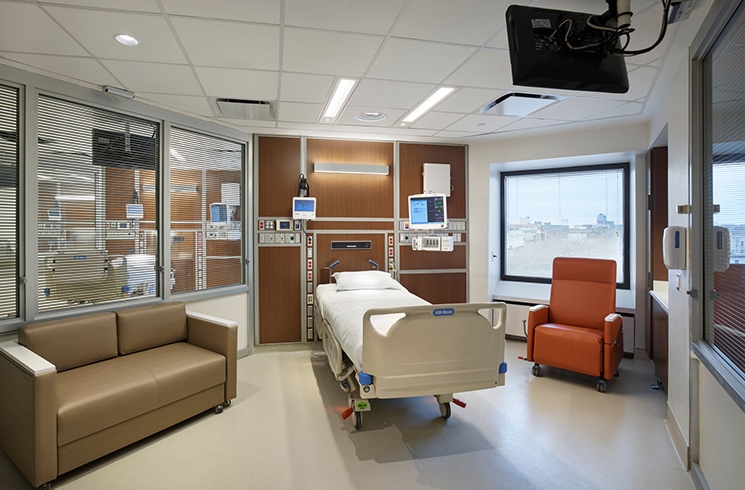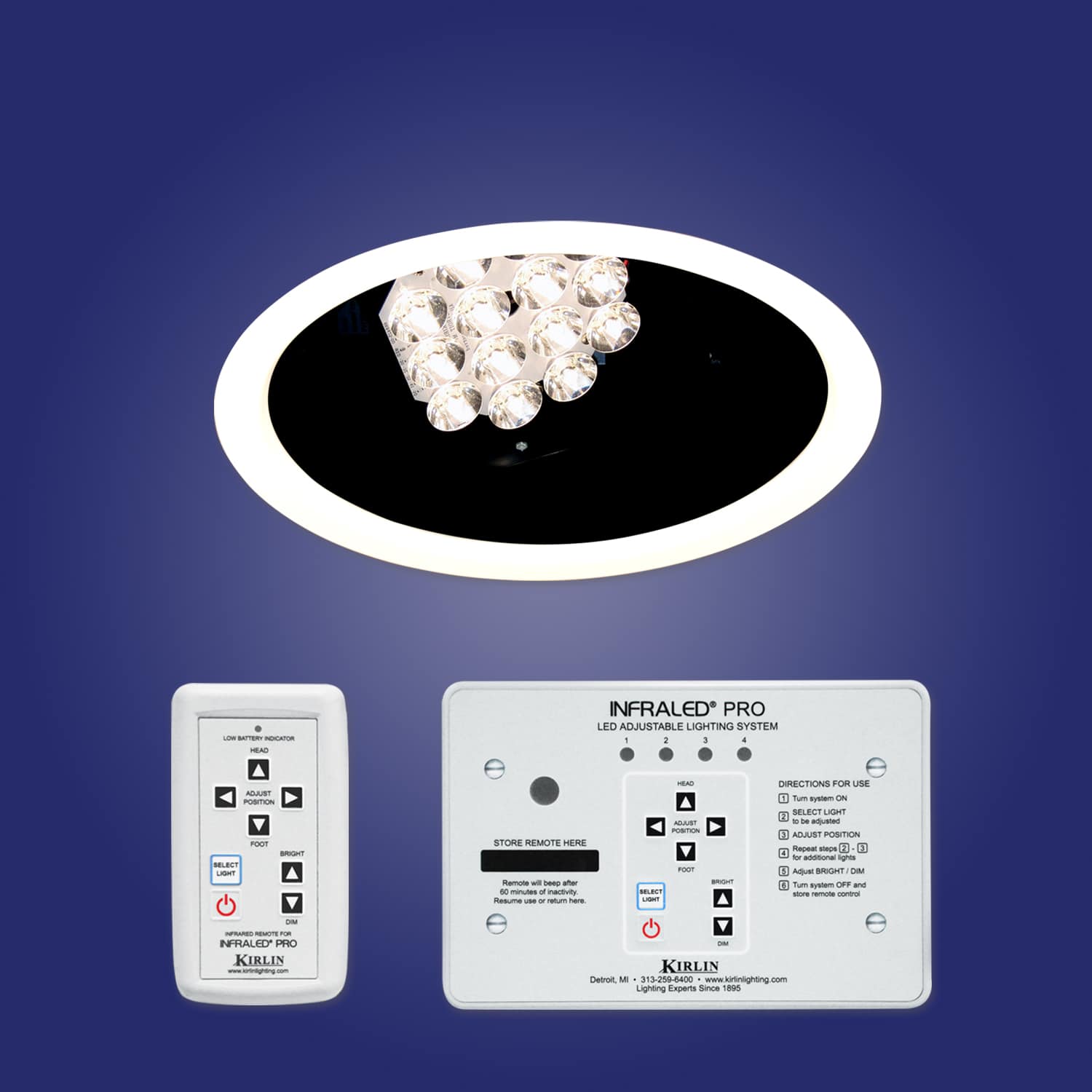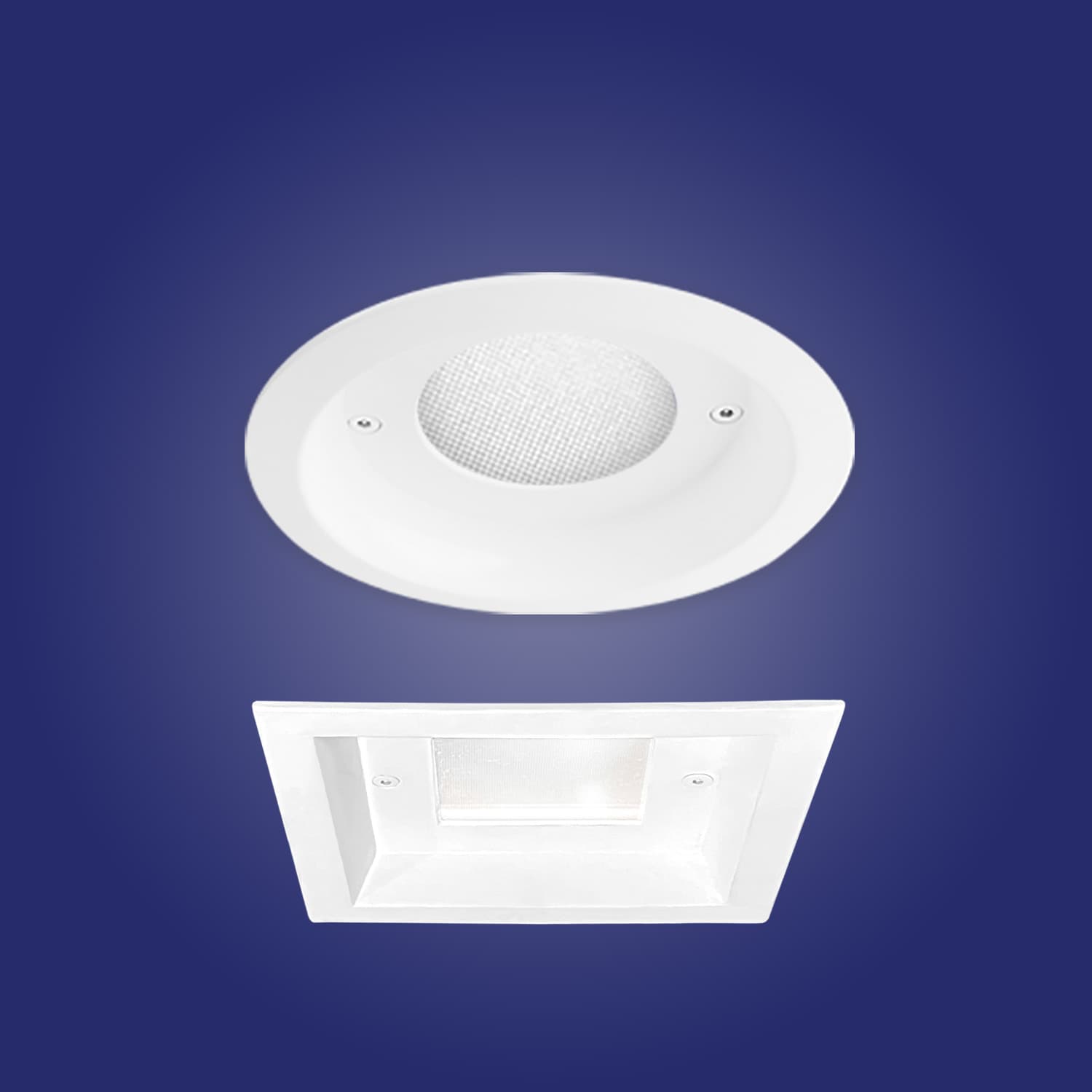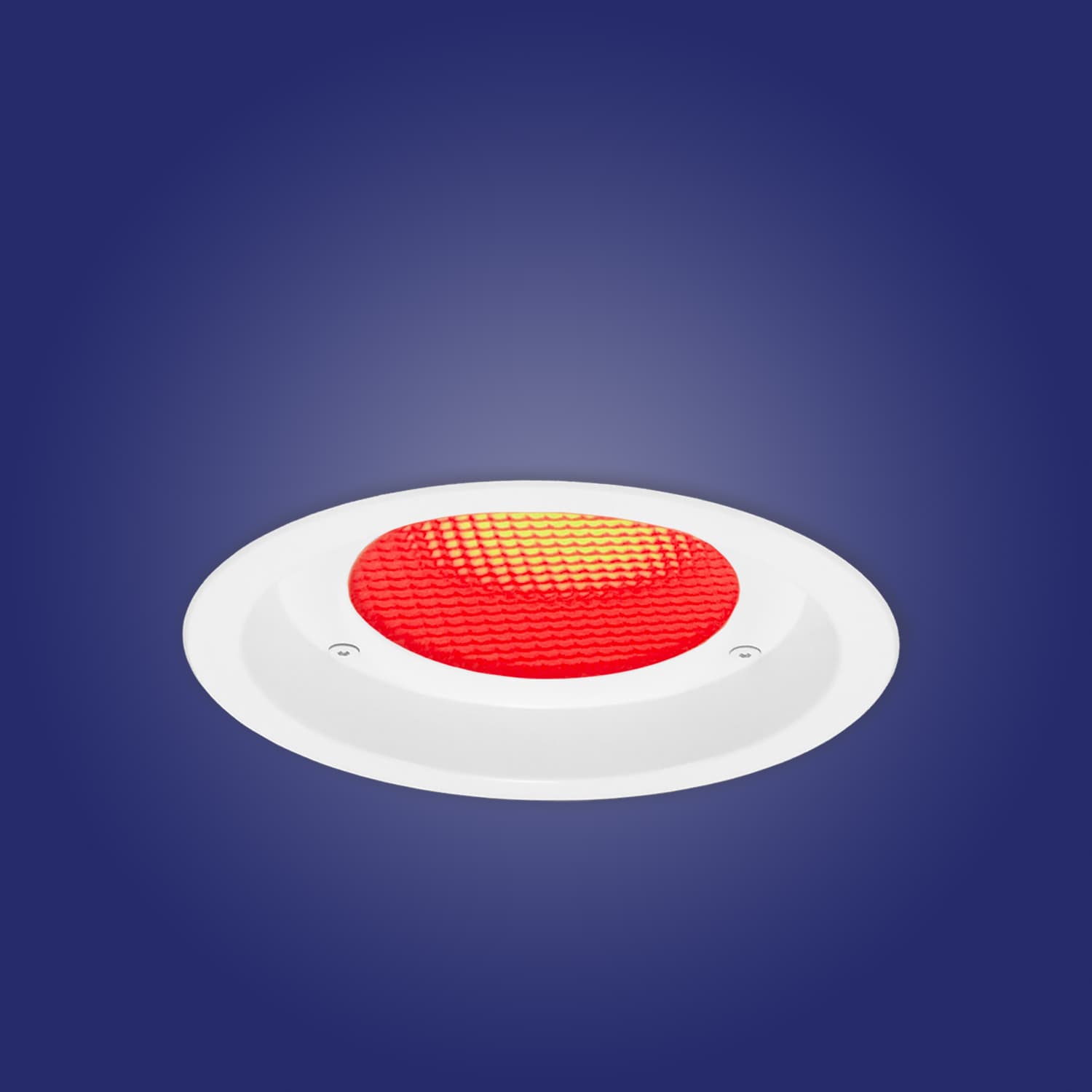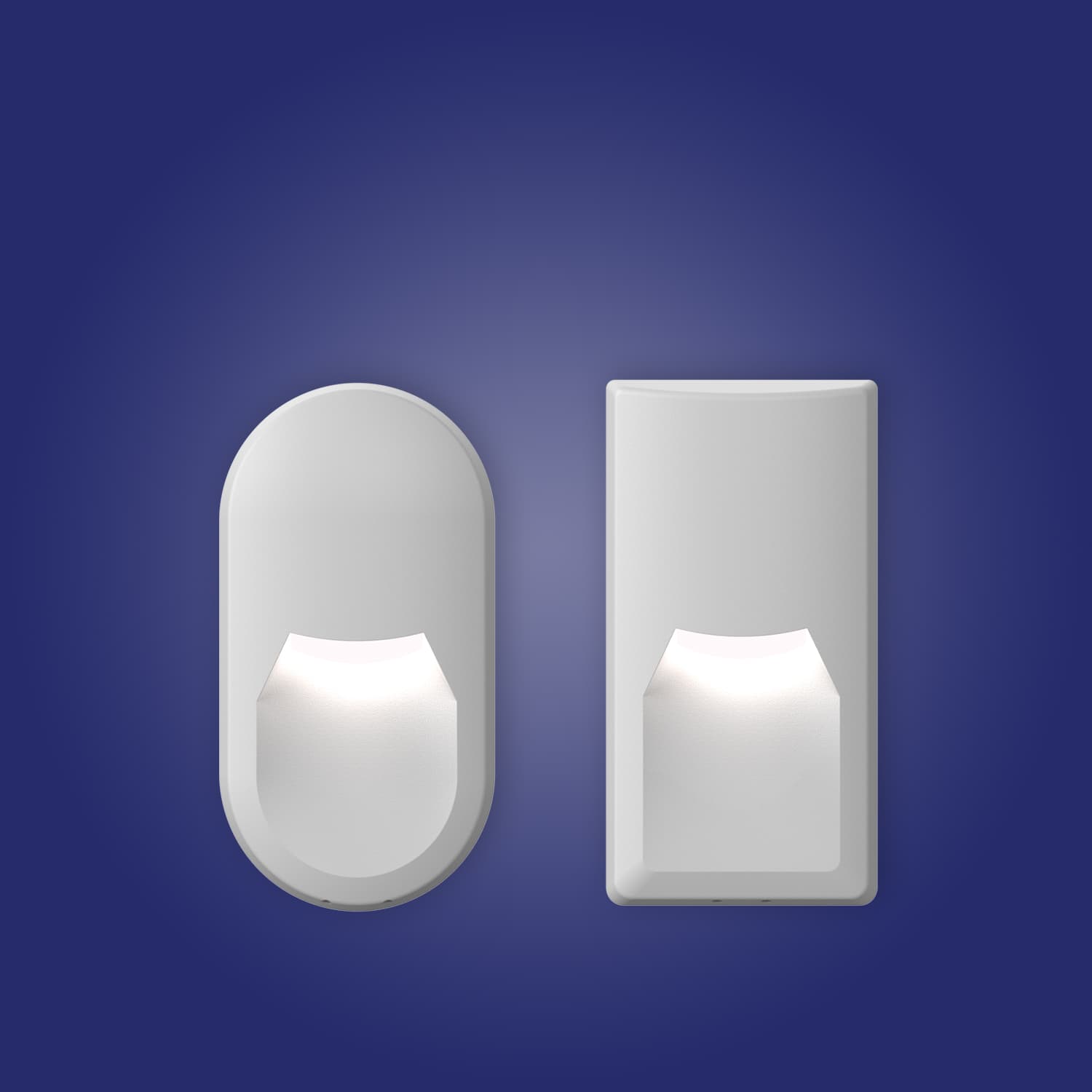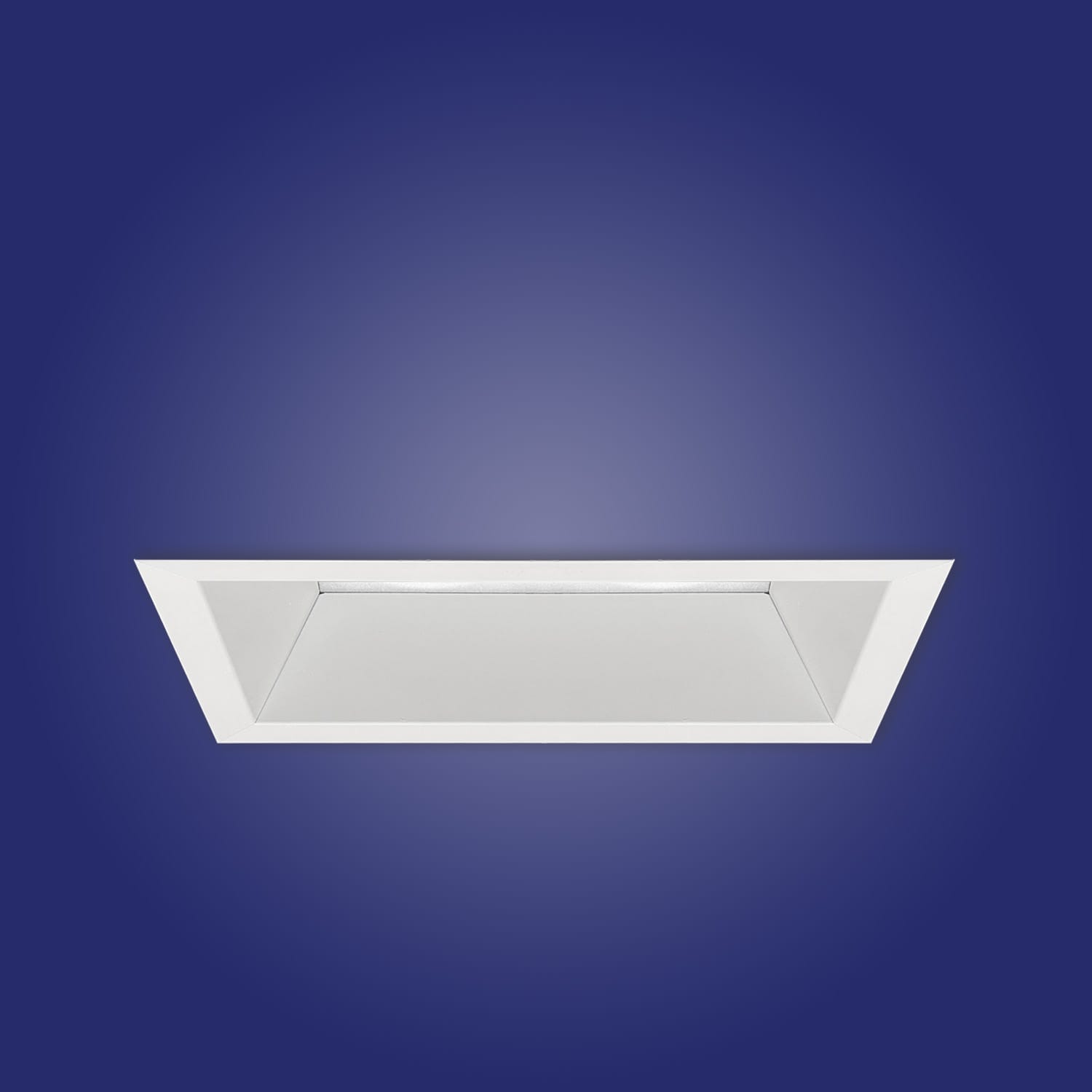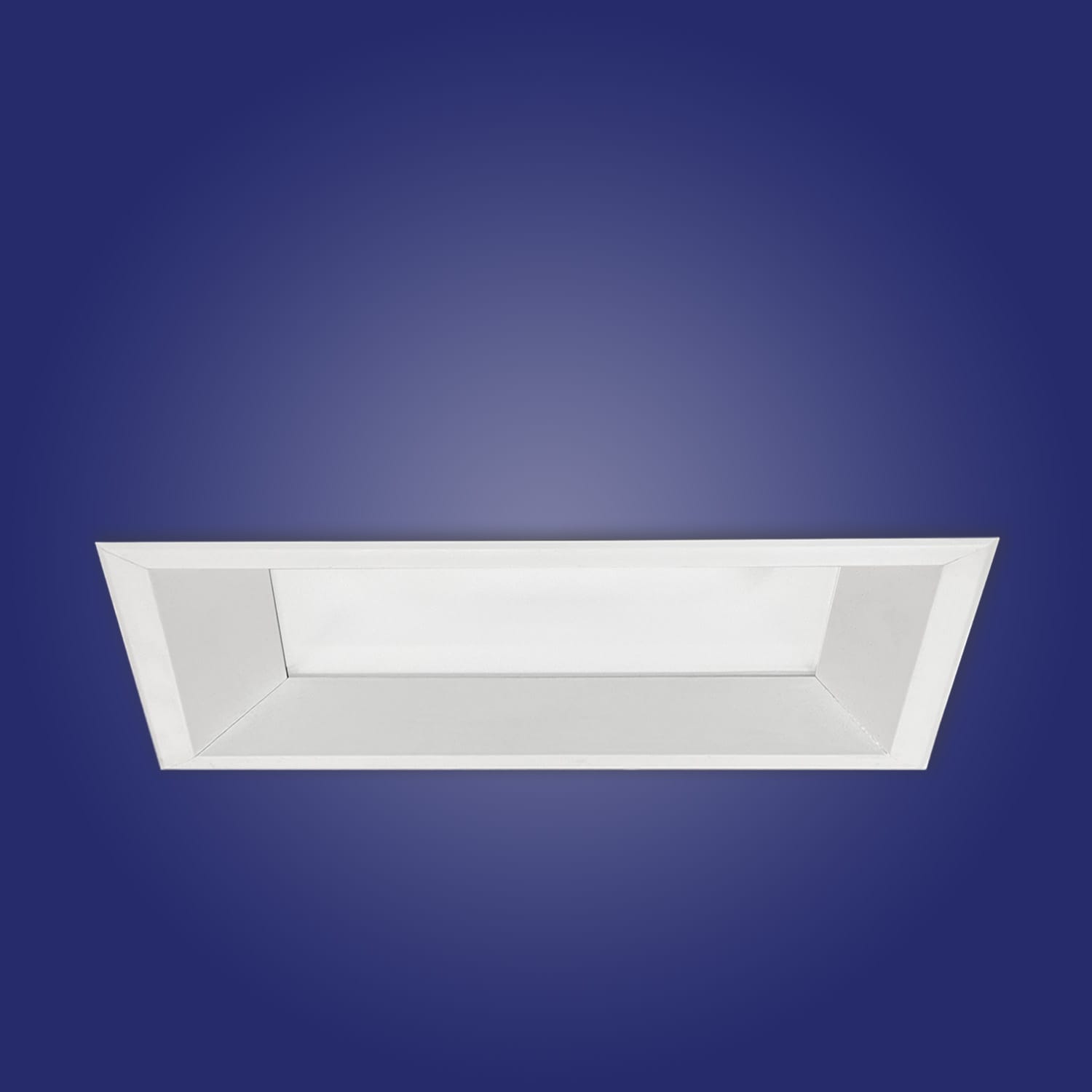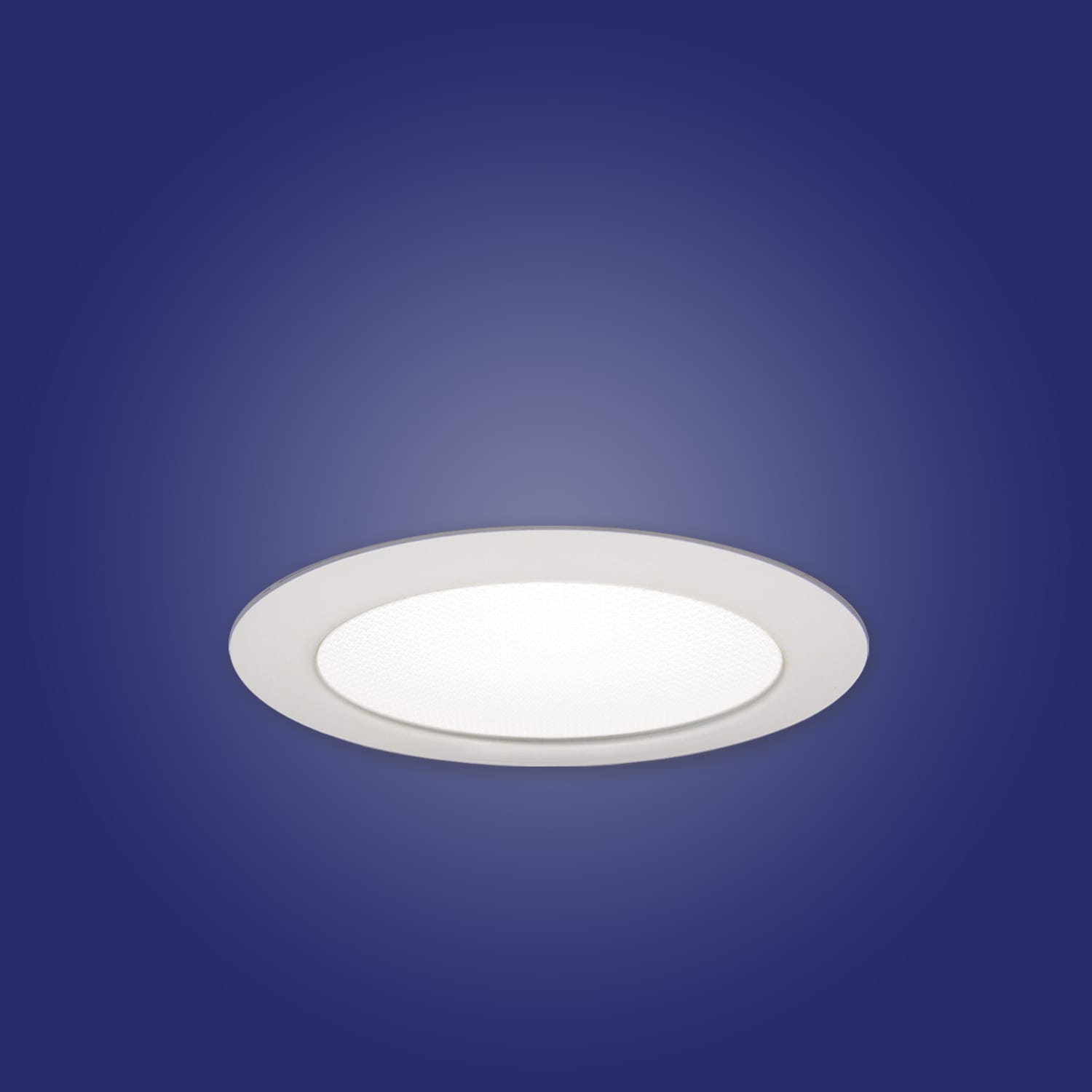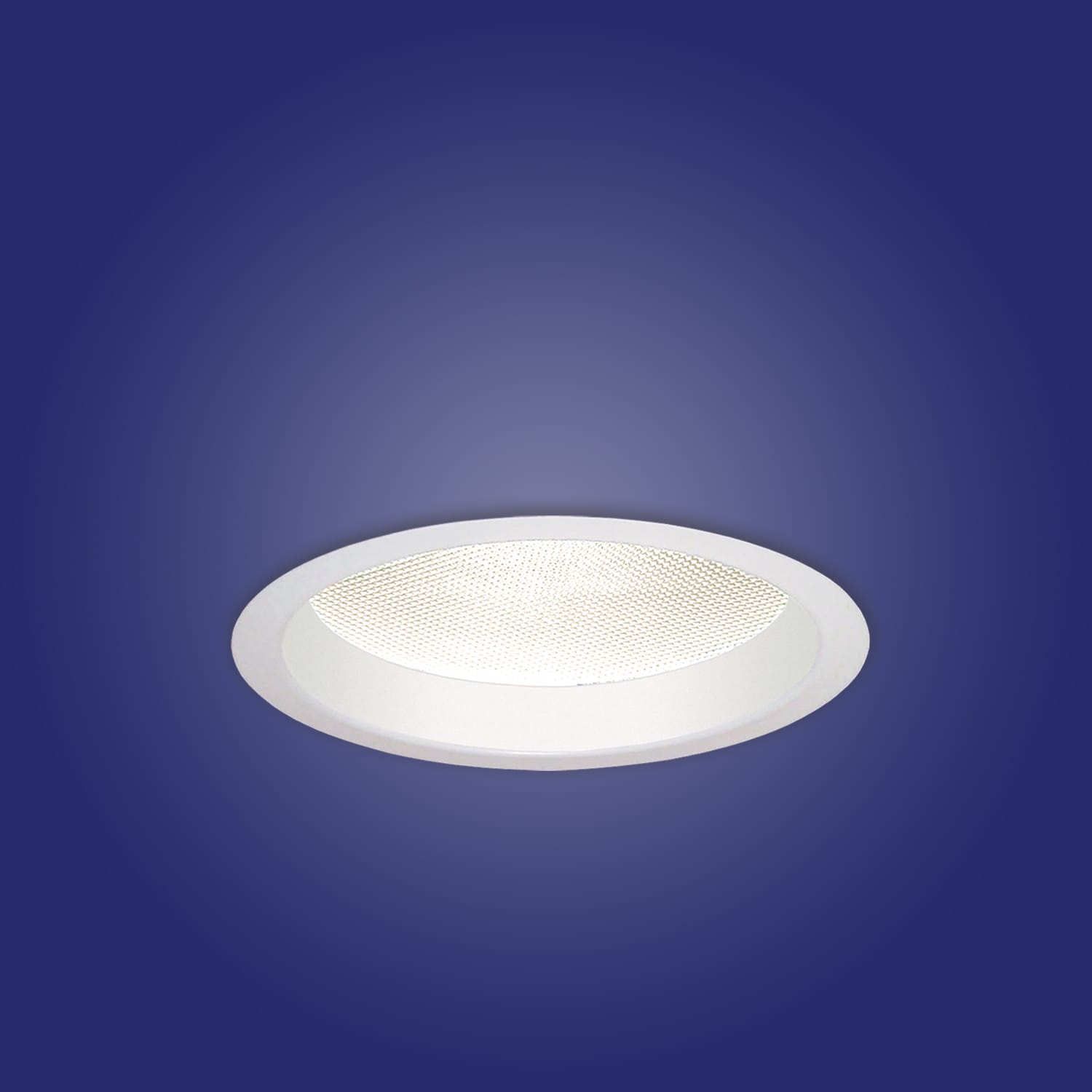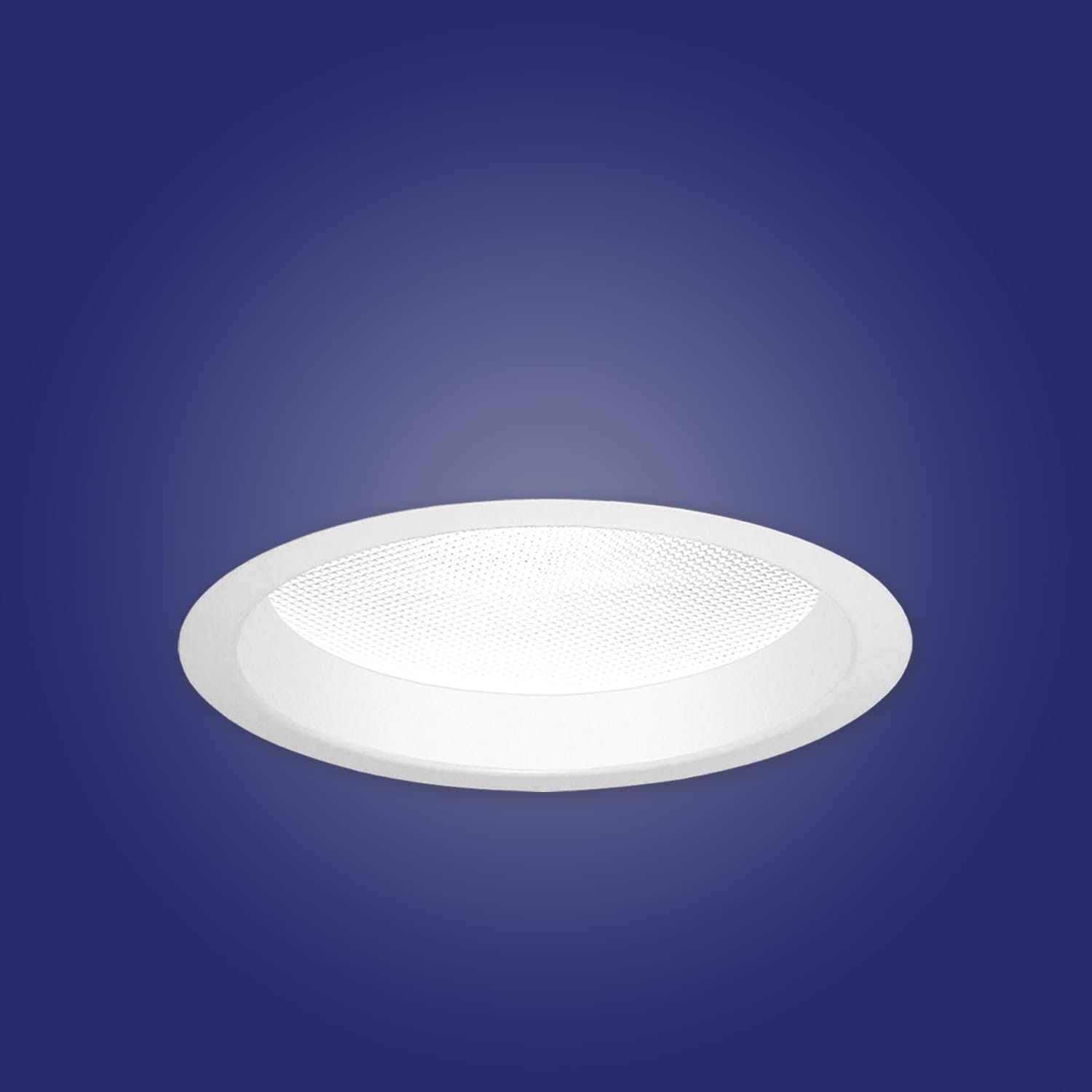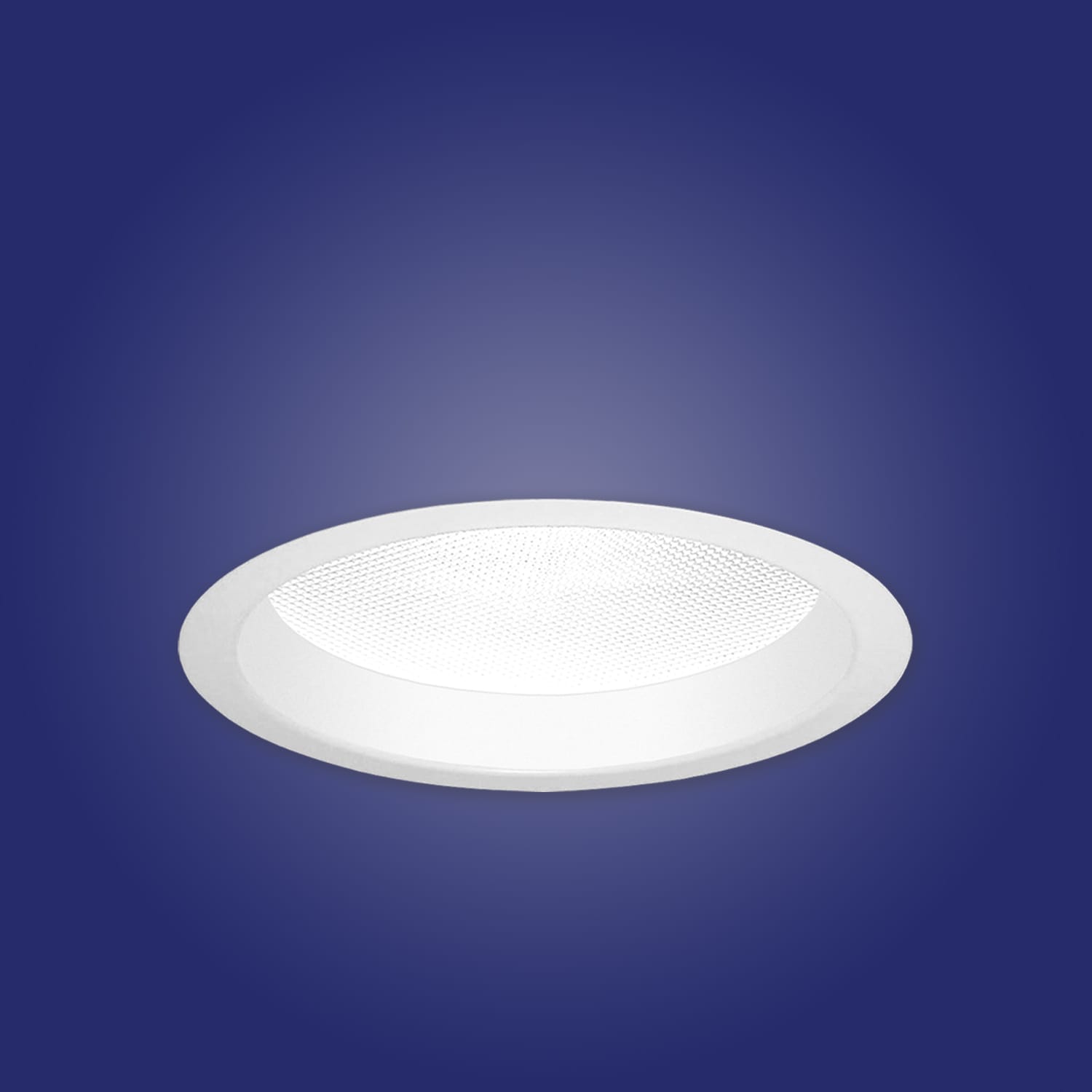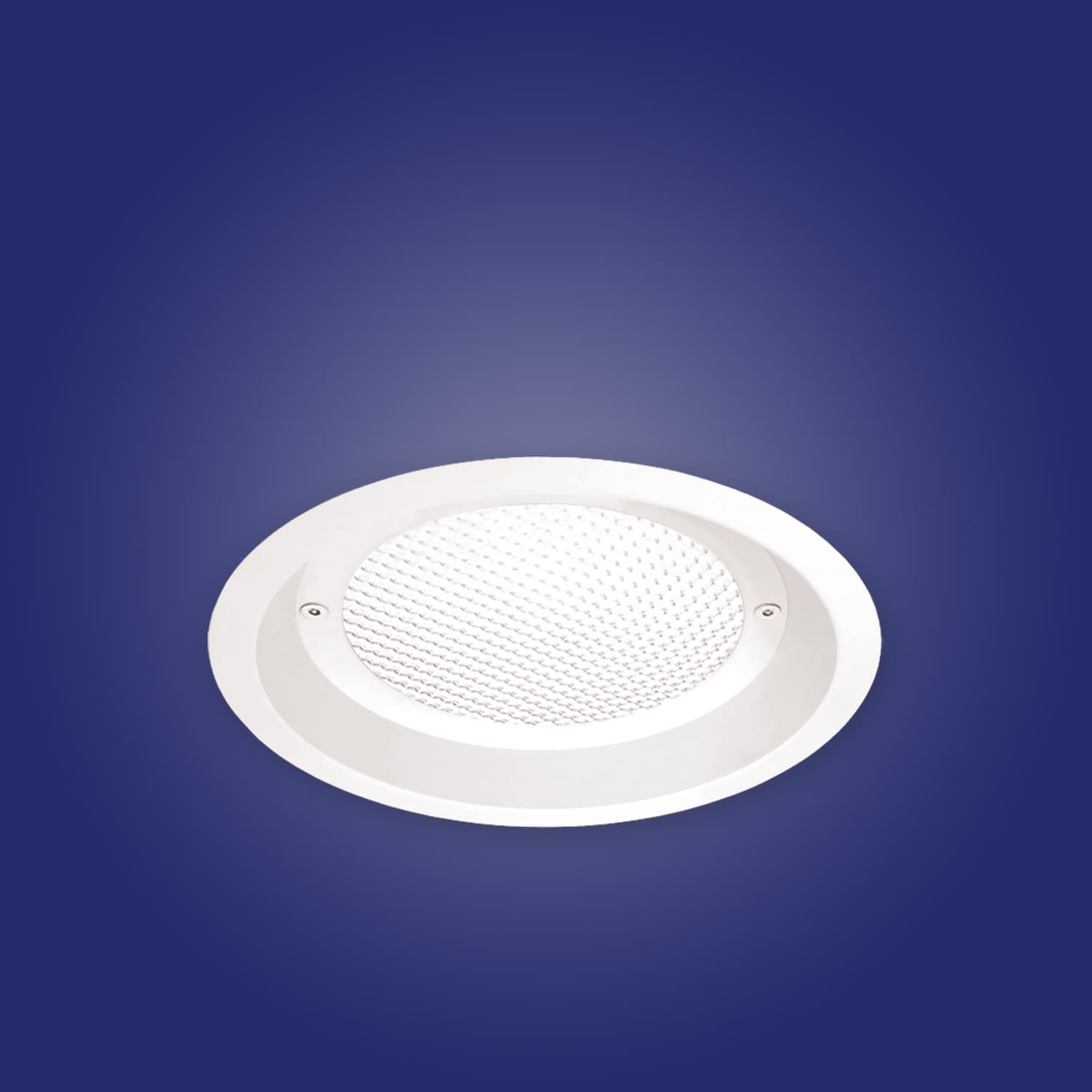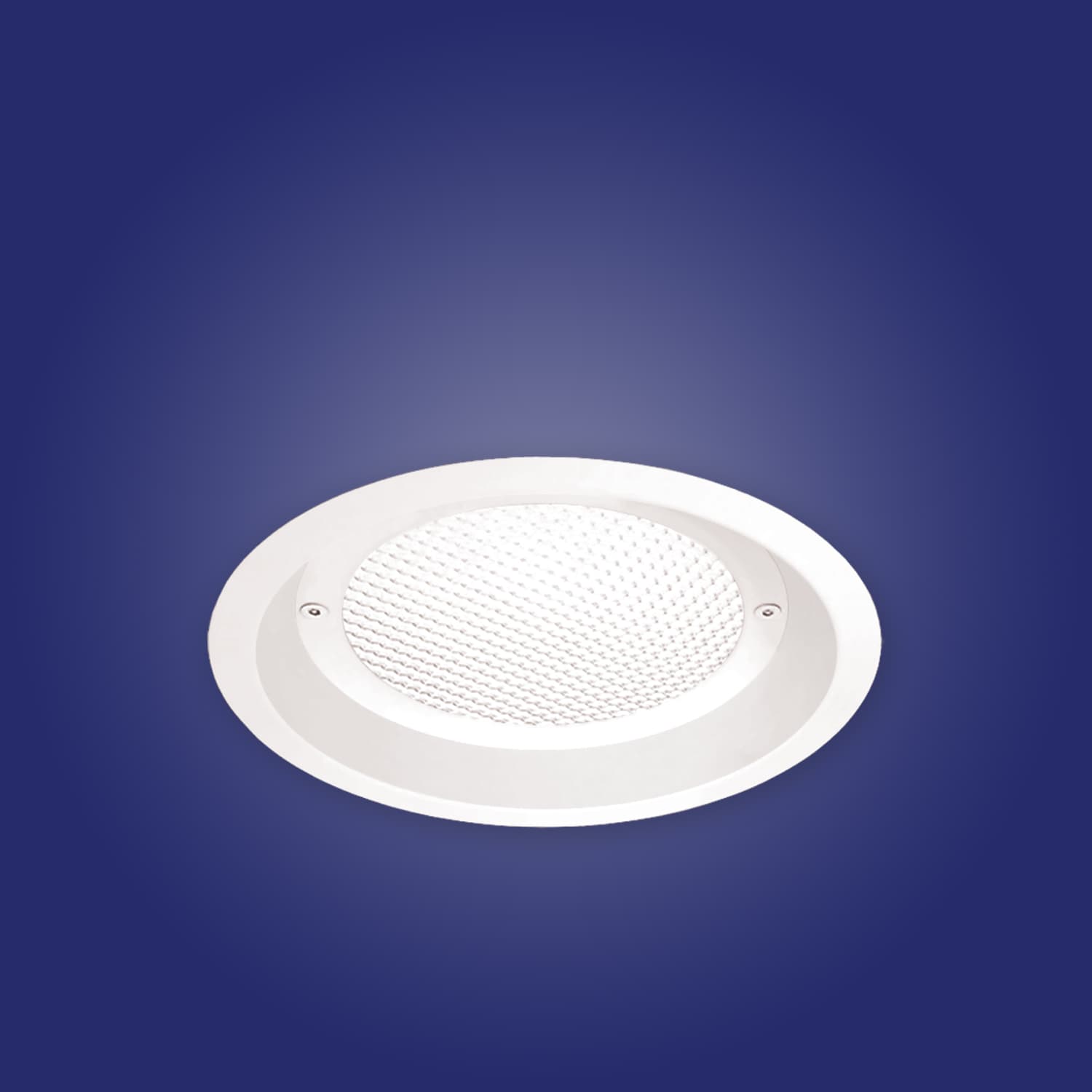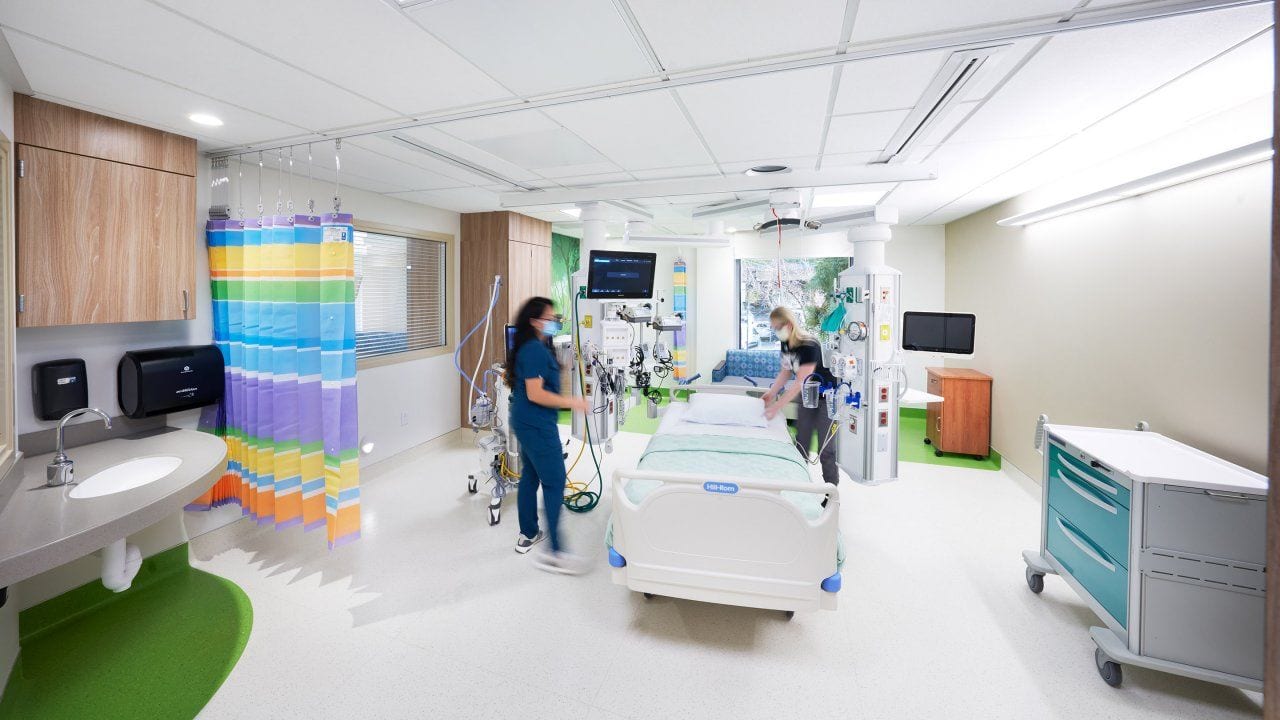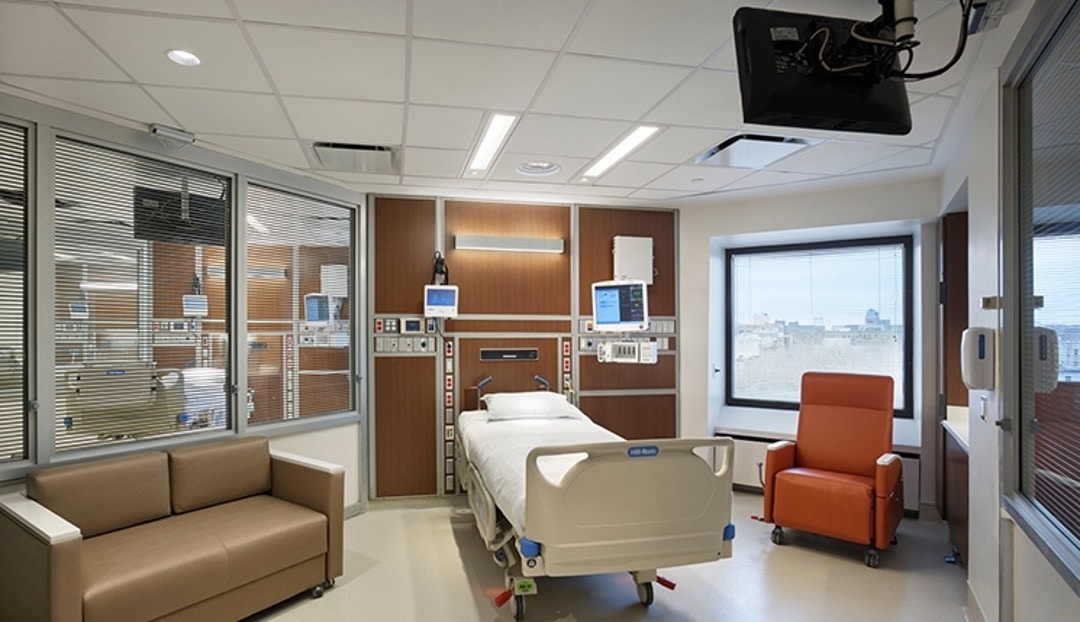ICU Lighting Solutions
In the ICU, patients are generally confined to a bed. A wide variety of exams and procedures occur in these rooms, and the need to perform emergency invasive operations within the ICU has been growing in recent years, according to the Center for Health Design.
Effective exam and procedural lighting in the ICU should be designed to accommodate the entirety of the patient bed area, with ability to aim specifically to the task. This can be accomplished with one INFRALED PRO 35 (PRO-12035) directly over the patient, or with a pair of PRO 35 fixtures over the bed, for shadow control, additional intensity, and for the ability to illuminate two sites simultaneously. The direction of each light and system intensity is conveniently adjusted from a single INFRALED PRO wall control placed anywhere in the room. The use of a companion remote control ensures that the direction and intensity of illumination can be adjusted immediately by a practitioner anytime, and from anywhere in the room.
New From Kirlin: Ambient+

In ICU settings, Ambient+ two color switchable technology offers a crucial advantage with its circadian supportive lighting, employing static wavelengths like 590nm, 617nm, and 634nm to facilitate around-the-clock care. This innovative feature allows clinicians to enter a patient’s room, perform vital checks, and update care notes without the need for disruptive, bright lighting. By minimizing sleep disturbances, Ambient+ supports the critical recovery process, recognizing the importance of uninterrupted rest in the healing journey. This thoughtful application of lighting technology ensures that even in the high-stakes environment of an ICU, patient comfort and recovery are prioritized, blending advanced care with the healing power of sleep.
ICU Lighting Best Practices
Learn more about illuminating an ICU room, and the major topics to consider, in this “Best Practices” webinar with the Kirlin team. We’ll touch on:
- The blurring lines between the ICU and the patient room
- The blurring lines between the ICU and the operating room
- Using IP66-rated INFRALED PRO recessed motorized exam lights to provide procedural light in the ICU
- Lensed and sealed downlights with antimicrobial finishes used for ambient lighting in the patient zone and family zone
- The use of circadian-supporting observation lights (MRV-06864) to promote sleep at night
- … and more!
Intensive Care Unit Collection
Featured ICU Projects
Intensive Care Unit FAQ
-
What procedures are done in the ICU, and what sort of procedural lighting do they require?
Most major procedures are done in the operating room, but certain tasks can be done right in the ICU, including inserting a tracheostomy tube and performing a laparotomy. These procedures require surgical light on the patient’s neck and abdomen respectively, both of which can be accomplished with a single PRO 35 over the patient bed, or a PRO 45 just past the foot of the bed, if the area above the patient is crowded with other lighting, air vents, or a patient lift. -
Are nightlights needed in the ICU?
Traditionally, ICUs have not been outfitted with nightlights because the patients are bed-ridden. But as hospital designs have improved over the years, studies have shown that giving a patient access to their family members, even in the ICU, can be beneficial.
While the patient may not be moving around the room at night, their spouse, child, or parent may be. For this reason we are seeing more nightlights used in ICU rooms.
